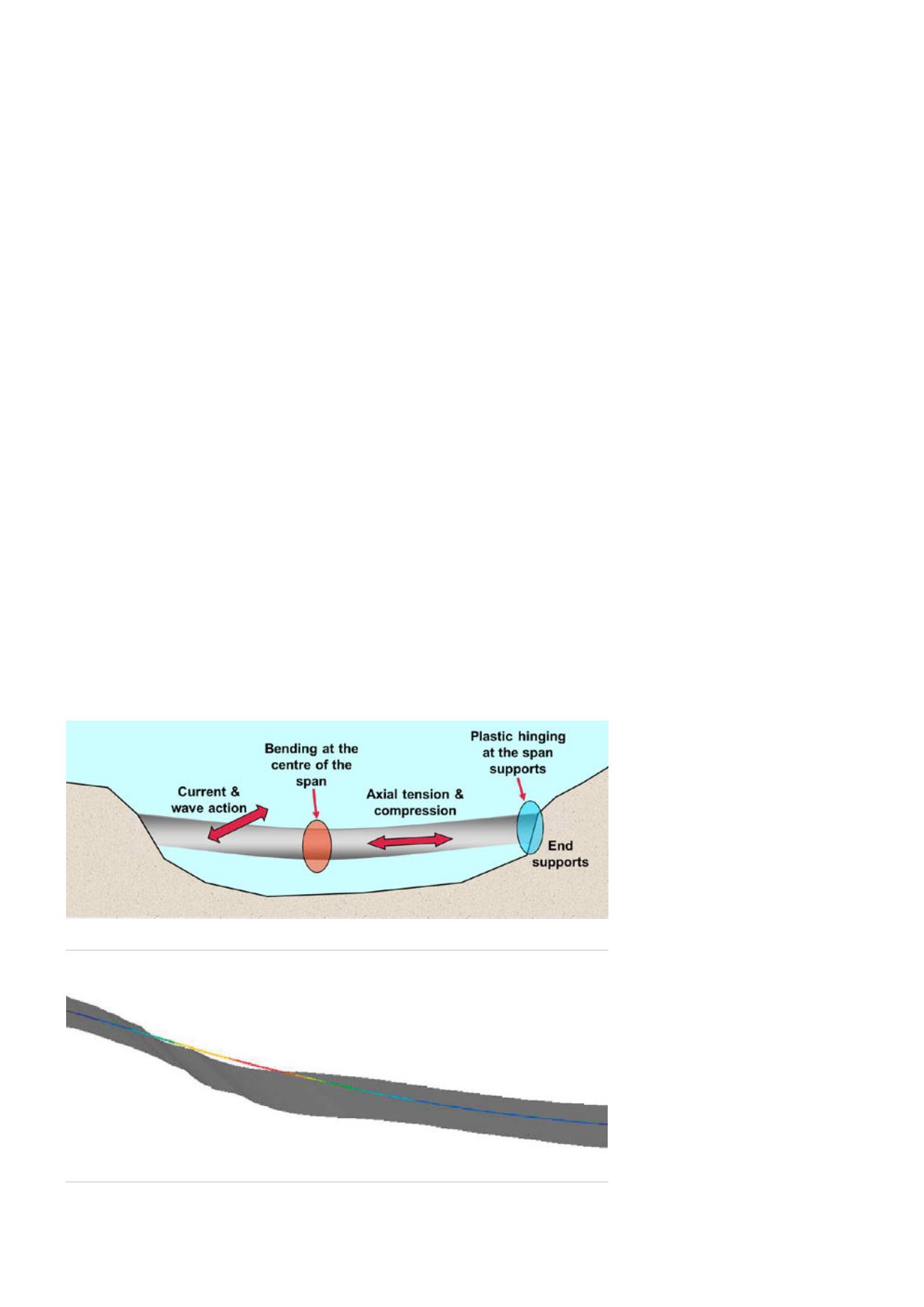
asset. Industry codes and standards are available to guide
engineers in the span assessment process, but they can be
overly conservative.
Span assessment
Jee’s engineering team has applied their expertise of
pipeline free spans to problems from all over the world.
The team uses their in-depth understanding of the
industry codes and standards and their wealth of integrity
management experience to remove undue conservatism in
free span assessments.
Coupled with regular pipeline inspection to monitor
span development, the company is often able to help
its clients avoid the need for costly remediation whilst
ensuring the continued safe operation of their assets.
Free span remediation generally takes the form of rock
placement and, considering remediation can in itself lead
to additional issues such as the formation of long
free
spans either side of the rock berm, its avoidance can greatly
simplify future integrity management and remediation
requirements.
In order to assess free span acceptability, Jee typically
adopts the approach specified in DNV-RP-F105, using a
combination of code compliant calculations and finite
element (FE) analyses as appropriate. The company’s
experience of delivering these free span assessments has
enabled them to build up a suite of validated calculation
templates and base models, which are reviewed and updated
as the standards are revised. This allows the team to turn
around free span assessments quickly, giving clients the
required information to make informed decisions on the
need for remediation and the associated timeframe such
that fitness-for-service is not compromised.
For more complex problems, such as the assessment of
free spans in pipe-in-pipe systems or bundles, the company
adopts a finite element approach in accordance with DNV-
RP-F105, ensuring that the differences in structural response,
damping and fatigue properties from a single rigid pipeline
are accounted for.
Span monitoring
The balance between compliance with the recommended
practices for free span assessment and the observed, ‘real
life’ span behaviour is a consideration that Jee not only has
experience of, but encourages the industry to adopt.
It has developed a free span monitoring system enabling
simultaneous real time recording of pipeline movement
along a free span, along with the associated water particle
velocities at the span location. The data is used to identify
if pipeline vibration is occurring at the flow velocities
predicted to cause excitation by the assessments performed.
If vibration does not occur when anticipated, the data
collected can be used to identify the areas of conservatism
in the analysis, which can then be updated accordingly.
The system comprises a number of accelerometers, a
remote power source, a data logger and current meters to
measure the local water particle velocity. This equipment
is housed in a streamlined module, which is strapped to
the spanning pipeline. The weight and positioning of the
system (at least two modules are used for each assessment)
is designed so that it minimises interference with the
pipeline response whilst enabling the acceleration of the
free span and therefore mode
of response to be identified
through comparison of the results.
Pipeline response data is logged
for an agreed period of time, after
which the data is retrieved and
downloaded for processing.
This monitoring system has
been deployed in numerous
locations worldwide and has helped
arrive at a number of interesting
conclusions. For example, the
company has found that free spans
of a significant length (over 100 m)
that industry codes had predicted
to fail imminently, were not actually
experiencing VIV. These findings had
a significant impact on the strategy
the client adopted for managing
free spans in the region.
Case study
The problem
Jee secured a contract with a major
oil and gas operator to perform a
Figure 1.
Loads experienced by a freespanning pipeline.
Figure 2.
FEA mode of spanning pipeline.
52
World Pipelines
/
FEBRUARY 2016


